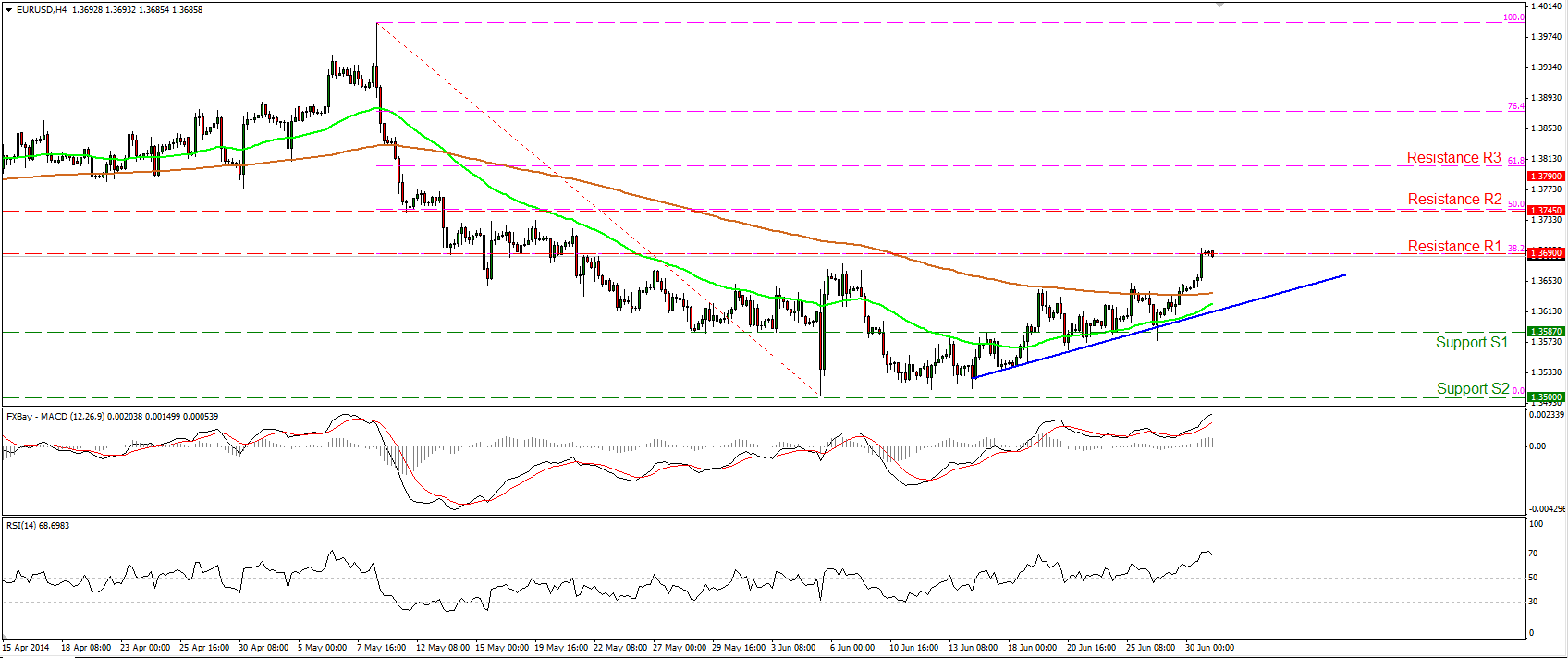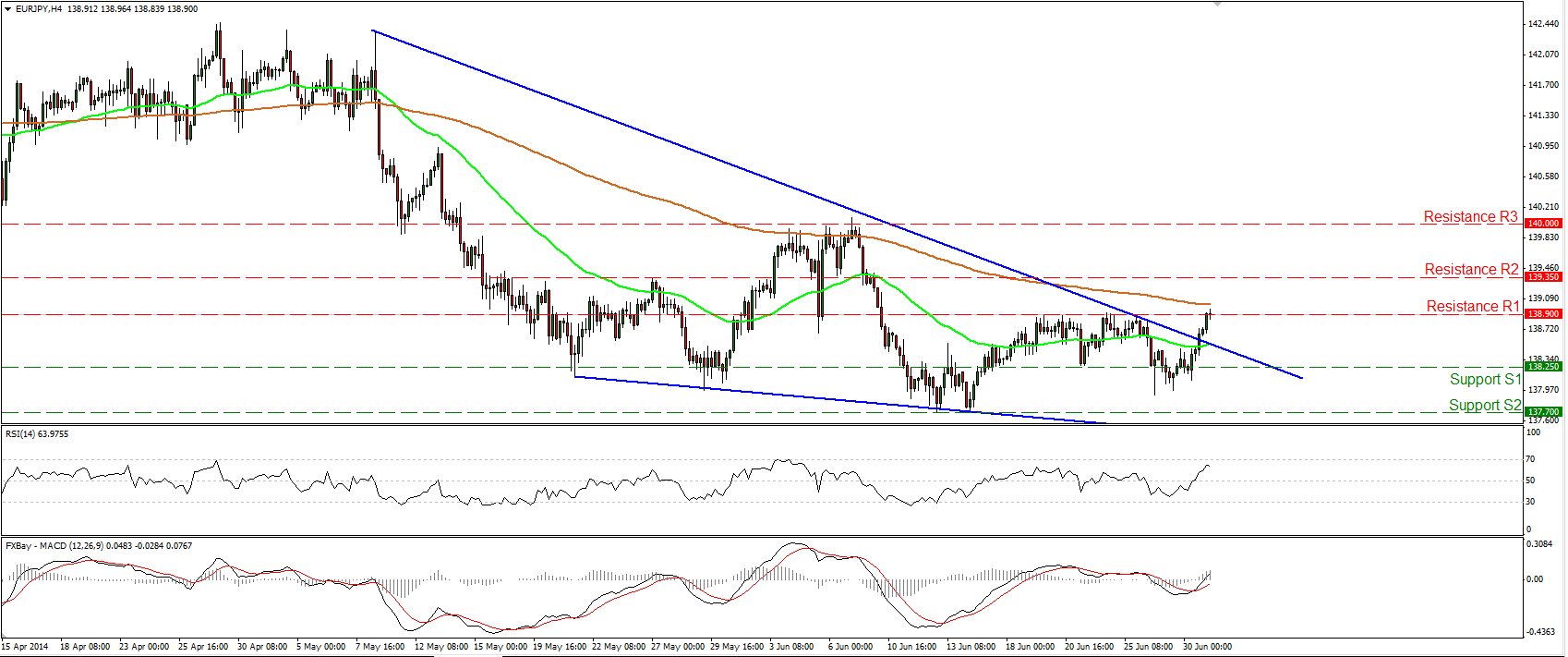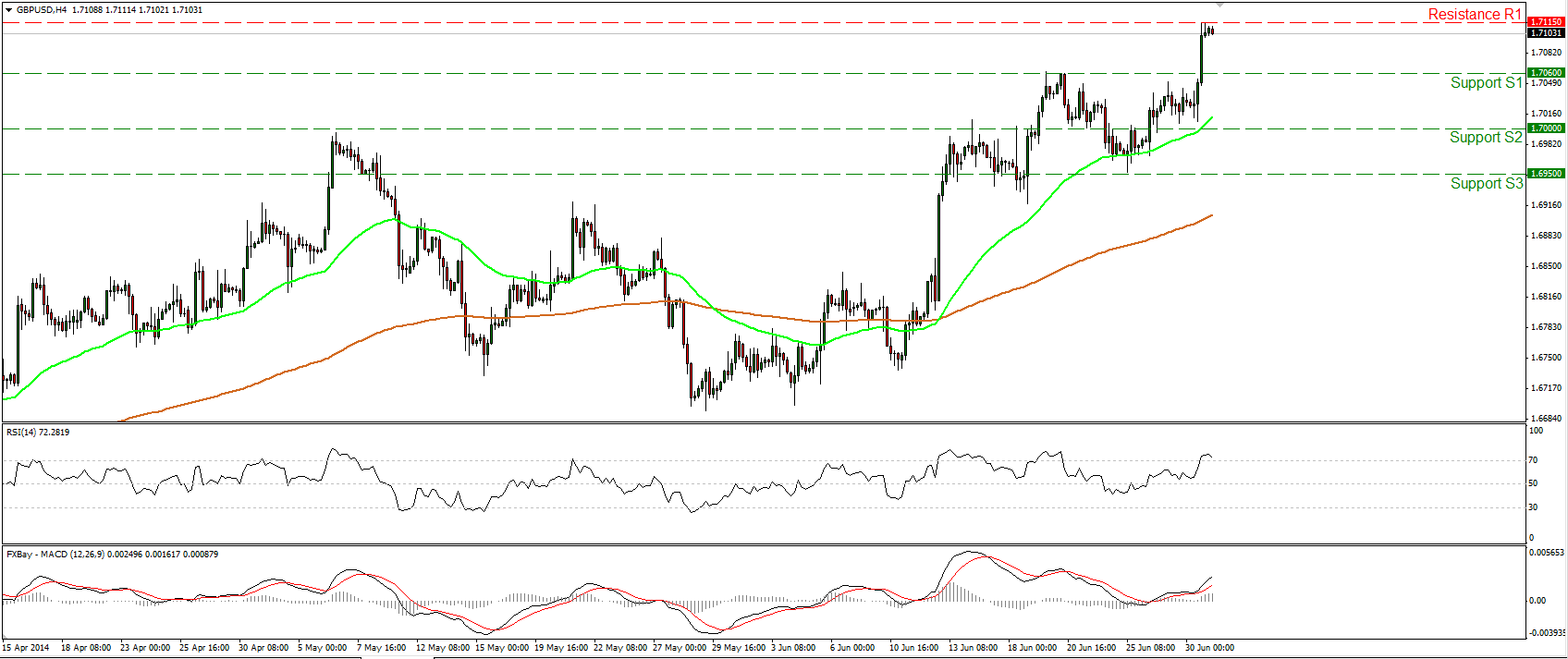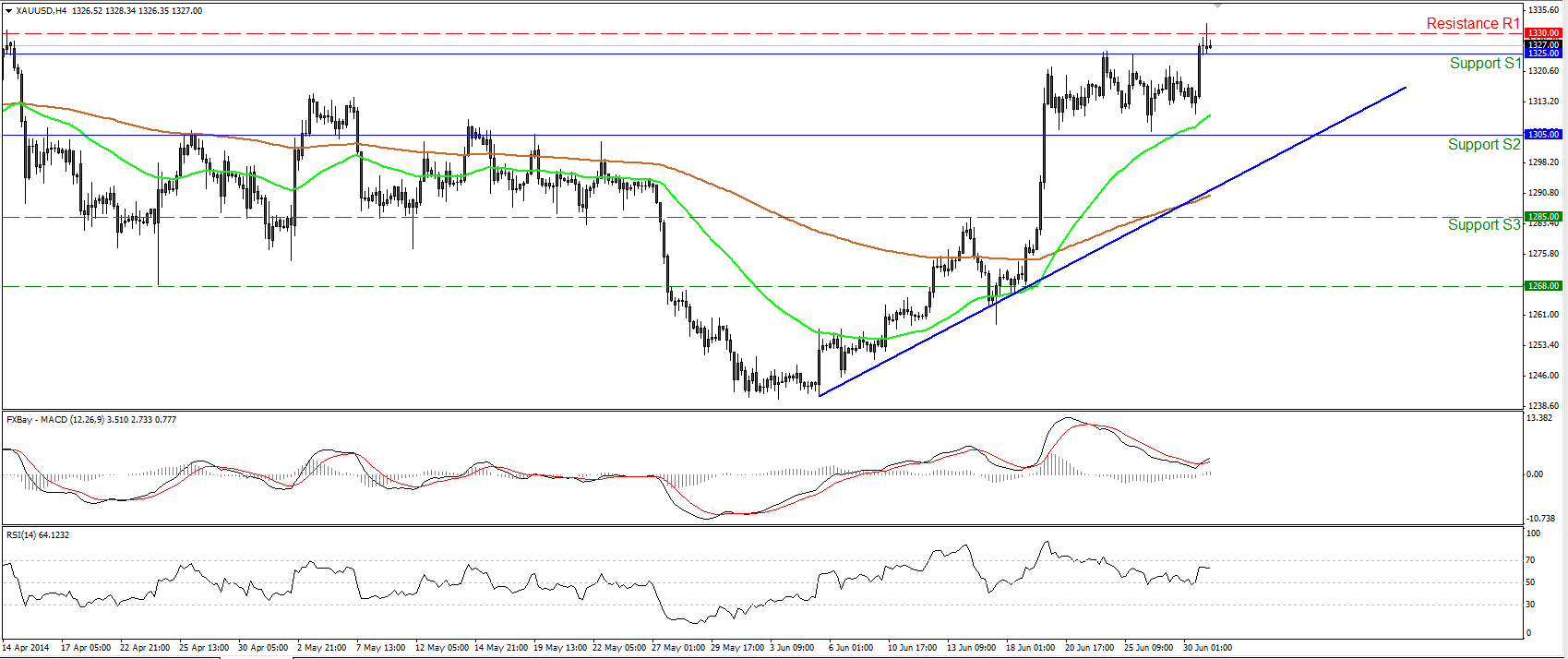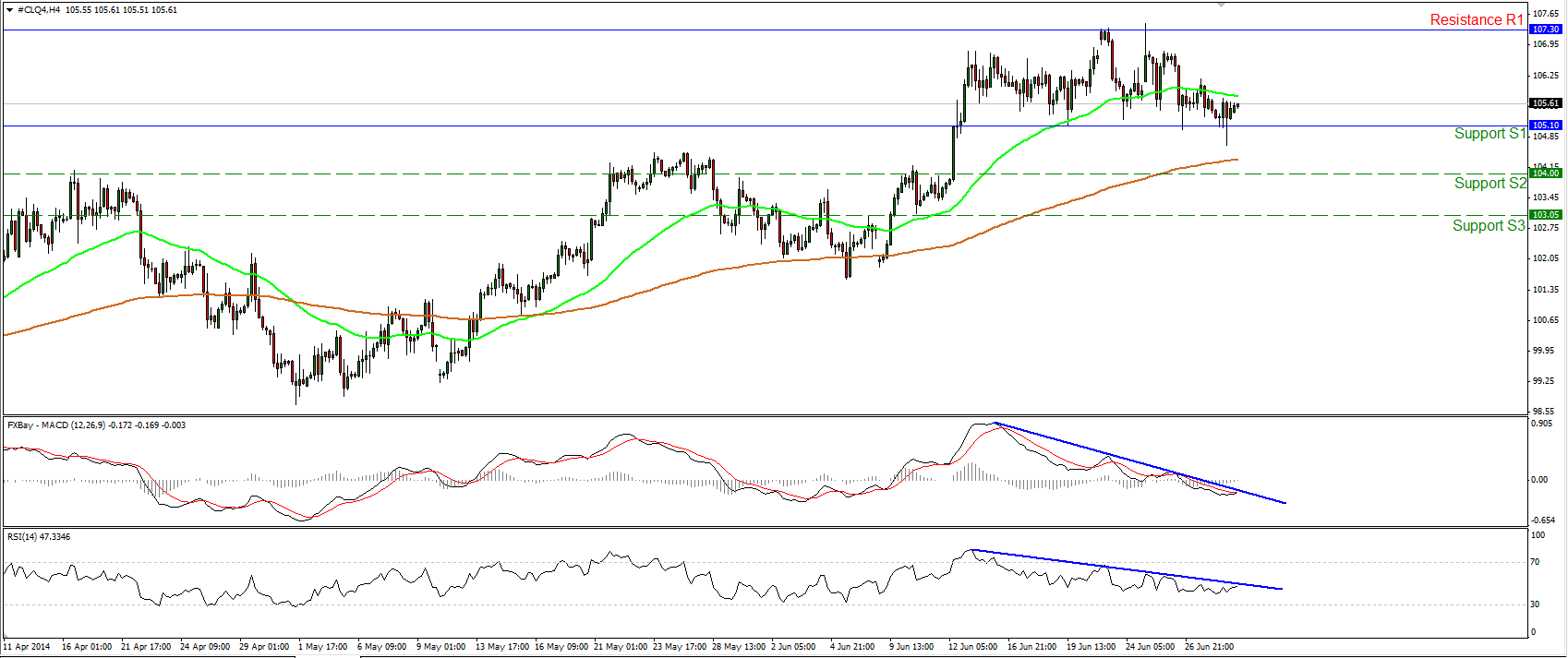A currency isn’t the stock price of a country. Many people assume that when a country’s economic fundamentals improve, the currency should appreciate. That’s probably based on the idea that a currency is like a stock. When a company’s results increase, usually the stock price goes up. The same thing should happen with a country. But it’s not necessarily true, and we saw that overnight with USD. The economic news was as usual favorable, but that didn’t matter to the market. Pending home sales for May were much much higher than expected -- +6.1% mom instead of the market consensus of +1.5%, and far higher than +0.4% in April. This suggests that the economy is indeed recovering from the disappointing first quarter, and that GDP will be higher in Q2 than in Q1, because housing sales add to GDP (real estate brokers’ commissions and all that). The Chicago PMI disappointed but the three-month average is still the highest for several years and the details were solid. Meanwhile the Dallas Fed manufacturing survey was better than expected. There was also a speech by San Francisco Fed President Williams, who said he expected GDP to run around 3% for the rest of the year, a fairly healthy pace, and for the unemployment rate to hit 6% by the end of the year. Yet bond yields declined by 1 or 2 bps, as did the implied interest rate on Fed Funds futures, and the dollar weakened against most of the G10 currencies. Month-end buying may have been responsible; we’ll have to see whether any of the move is reversed over the coming week.
The one exception was the yen, which weakened as a somewhat better-than-expected Tankan report sent Japanese stocks higher. The current conditions were in several cases weaker than expected, but the expectations for Q3 were generally in line with or even better than expectations. Particularly encouraging was the jump in large manufacturers’ capital spending predictions. There was also a rise in the output price index, indicating that deflationary pressures are decreasing. However, the tankan did not indicate much upward pressure on wages, so I personally doubt the Bank of Japan’s scenario that inflation will pick up in the second half of the year (unless the yen begins weakening again). Already break-even inflation rates on index-linked Japanese government bonds show that the market does not expect inflation to hit the BoJ’s 2% target. I also have reservations about how successful PM Abe’s “Third Arrow” of structural reform will be. The net result is that I still think the BoJ will have to take further steps later this year to loosen policy further, which will weaken the yen.
The Reserve Bank of Australia (RBA) kept rates steady at 2.5%, as was universally expected. I could discern no significant differences at all between the statement this time and last time. AUD/USD moved up around 20 bps, perhaps on relief that they didn’t come out with any stronger statement about the AUD.
Today is PMI day. It started in China, where the official manufacturing PMI for June increased exactly in line with market expectations to 51.0 from 50.8. The final manufacturing PMI for June from HSBC/Markit however was revised down slightly, although it remained above the crucial 50 barrier. It was notable that AUD/USD barely moved when the figure was released. Perhaps AUD is becoming less sensitive to Chinese economic news and more sensitive to domestic factors.
Later we get the manufacturing PMI figures for June from several European countries, the Eurozone as a whole, the UK and the US. As usual, the final forecasts for the French, the German and Eurozone’s figures are the same as the initial estimates. The UK manufacturing PMI is estimated to be slightly down to 56.8 from 57.0, while in the US, the ISM manufacturing PMI is expected to have risen to 55.8 from 55.4. That could prove USD-supportive, except yesterday’s good US indicators failed to support the dollar so one wonders if today’s will.
Besides the PMIs, we have the German unemployment rate for June and Eurozone’s unemployment rate for May. Both rates are expected to have remained unchanged at 6.7% and 11.7% respectively.
Only one speaker is scheduled on Tuesday’s agenda. ECB Governing council member Ewald Nowotny, speaks at a briefing with IMF about the Fund’s review of Austria.
THE MARKET
EUR/USD reaches the 1.3690 zone
EUR/USD moved higher on Monday reaching the 38.2% retracement level of the 8th May- 5th June decline. The MACD lies above both its zero and signal lines, but the RSI seems ready to exit its overbought zone. As a result, I would expect the forthcoming wave to be to the downside, maybe for a test near the blue upside support line. Since the pair is still trading above that near-term support line, I consider the upside correcting phase to remain in effect. Only a dip below 1.3587 (S1) may signal that the retracement is over and pave the way towards the key support of 1.3500 (S2).
Support: 1.3587 (S1), 1.3500 (S2), 1.3475 (S3).
Resistance: 1.3690 (R1), 1.3745 (R2), 1.3790 (R3).
EUR/JPY breaks the upper bound of the wedge
EUR/JPY moved higher yesterday, violating the upper boundary of the falling wedge formation. The advance was halted by our resistance barrier of 138.90 (R1), where an upside violation may confirm the exit of the wedge pattern and trigger extensions towards the 140.00 (R3) psychological zone. Both our momentum studies moved higher, with the MACD crossing above its signal and zero lines. This confirms the recent bullish momentum and increases the possibilities for further advance in the near future. In the bigger picture, the long-term path of the rate remains to the sideways since we cannot identify a clear trending structure.
Support: 138.25 (S1), 137.70(S2), 136.75 (S3).
Resistance: 138.90 (R1), 139.35 (R2), 140.00 (R3).
GBP/USD above 1.7100
GBP/USD surged on Monday, breaking above the hurdle of 1.7060 and confirming a forthcoming higher high. The rally was halted by the resistance bar at 1.7115 (R1), where a decisive upside violation could pave the way towards the 1.7200 (R2) zone. The MACD lies above both its trigger and zero lines, but the RSI seems ready to exit its overbought territory. Having that in mind, I would expect some consolidation or a pullback before the longs take control again. In the bigger picture, the 80-day exponential moving average provides reliable support to the lows of the price action, keeping the long-term path to the upside.
Support: 1.7060 (S1), 1.7000 (S2), 1.6950 (S3).
Resistance: 1.7115 (R1), 1.7200 (R2), 1.7300 (R3).
Gold breaks out of the range
Gold emerged above 1325, the upper boundary of the short-term sideways path it has been trading since the 19th of June. The precious metal is now trading below the resistance of 1330 (R1) and if the bulls are willing to overcome that barrier, I would expect them to trigger extensions towards the next obstacle at 1342 (R2). The MACD, already within its positive territory, crossed above its trigger line, while the RSI moved higher after finding support at its 50 level, amplifying the case for the continuation of the advance. As long as the metal is trading above both the moving averages and above the blue uptrend line, the overall technical picture remains positive.
Support: 1325 (S1), 1305 (S2), 1285 (S3).
Resistance: 1330 (R1), 1342 (R2), 1350 (R3).
WTI keeps the sideways path intact
WTI declined and tried to break below the 105.10 (S1) support, but failed to do so and remained within the range between that barrier and the resistance of 107.35 (R1). Since the short-term path of oil remains to the sideways, I still see a neutral picture. Only a decisive break out of the sideways range could provide more clues about the forthcoming directional movement of WTI.
Support: 105.10 (S1), 104.00 (S2), 103.05 (S3).
Resistance: 107.35 (R1), 108.00 (R2), 110.00 (R3).
Recommended Content
Editors’ Picks
EUR/USD clings to daily gains above 1.0650

EUR/USD gained traction and turned positive on the day above 1.0650. The improvement seen in risk mood following the earlier flight to safety weighs on the US Dollar ahead of the weekend and helps the pair push higher.
GBP/USD recovers toward 1.2450 after UK Retail Sales data

GBP/USD reversed its direction and advanced to the 1.2450 area after touching a fresh multi-month low below 1.2400 in the Asian session. The positive shift seen in risk mood on easing fears over a deepening Iran-Israel conflict supports the pair.
Gold holds steady at around $2,380 following earlier spike

Gold stabilized near $2,380 after spiking above $2,400 with the immediate reaction to reports of Israel striking Iran. Meanwhile, the pullback seen in the US Treasury bond yields helps XAU/USD hold its ground.
Bitcoin Weekly Forecast: BTC post-halving rally could be partially priced in Premium

Bitcoin price shows no signs of directional bias while it holds above $60,000. The fourth BTC halving is partially priced in, according to Deutsche Bank’s research.
Week ahead – US GDP and BoJ decision on top of next week’s agenda

US GDP, core PCE and PMIs the next tests for the Dollar. Investors await BoJ for guidance about next rate hike. EU and UK PMIs, as well as Australian CPIs also on tap.
